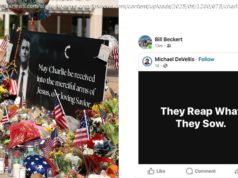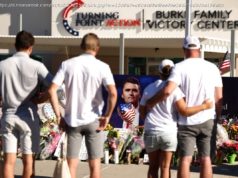Inspections to confirm that North Korea had shut down its nuclear program and secure its arms would be far more onerous than those in Iran under a current deal that President Trump wants to end.
WASHINGTON — As he weighs opening nuclear disarmament negotiations with North Korea, President Trump faces a regime that for decades has hidden key elements of its nuclear programs from international monitors and has banned inspectors from the country.
As a result, the first step in any meaningful agreement will be a declaration from North Korea about the scope of its nuclear program, a declaration that no one will believe.
It will have to be followed by what experts call the most extensive inspection campaign in the history of nuclear disarmament, one that will have to delve into a program that stretches back more than half a century and now covers square miles of industrial sites and hidden tunnels across the mountainous North. And it may demand more than the 300 inspectors the International Atomic Energy Agency now deploys to assess the nuclear facilities of nearly 200 countries.
For Mr. Trump, getting the right declaration and inspection process is critical given his argument that false declarations from Iran undercut the legitimacy of the 2015 nuclear accord, which he is debating pulling out of later this week.
While there is no question Iran hid much of its weapons-designing past, North Korea has concealed programs on a far larger scale and built an arsenal of 20 to 60 nuclear warheads — compared to none in Iran. In fact, the Iran inspections, the I. A. E. A. says, have gone on without a hitch in the past two years, though it is a far smaller, comparatively easier effort.
“North Korea could make Iran look easy,” Ernest J. Moniz, the former Energy Department secretary and nuclear scientist who negotiated many details of the 2015 deal during the Obama administration, said last week.
“This isn’t ‘Trust but verify,’” he said, using Ronald Reagan’s phrase from arms control negotiations with the Soviet Union. “It’s ‘Distrust everything and verify, verify.’”
Success with a relatively small force of inspectors in North Korea, according to former weapons inspectors, depends on the full cooperation of its leader, Kim Jong-un, in opening up the vast nuclear enterprise he inherited from his father and grandfather.
Four years ago, the RAND Corporation, which often conducts studies for the Defense Department, estimated that finding and securing the North’s weapons of mass destruction if the nation fell apart — or into any situation in which it might be hostile to inspection — could require up to 273,000 troops. That is far more than the peak of the American occupying force in Iraq.
Like Iran, North Korea would have to begin any denuclearization pact with a comprehensive listing of all its atomic sites, factories and weapons — which American intelligence agencies would immediately compare with their own estimates.
The complexity of the ensuing verification would depend on how extensive a “disarmament” Mr. Trump has in mind — and whether it matches Mr. Kim’s definition.
Everyone agrees that such a program of disarmament would involve the North surrendering its nuclear arms. But American intelligence agencies have vastly differing estimates of the size of the arsenal, be it the C. I. A.’s assessment of around 20 nuclear weapons or the Defense Intelligence Agency’s estimate of about 60. That means it is possible that inspectors will never know for sure if they have found everything.
So far, the Trump administration has not said whether North Korea would have to dismantle most or all of its nuclear-fuel production facilities, which are believed to be far more numerous than Iran’s. Nor is it clear whether the North would have to give up its missiles.
North Korea is also believed to possess large stores of germ weapons and nerve gas, like the kind used to assassinate Mr. Kim’s half brother in an attack last year in Malaysia.
But it is the sprawling nuclear complex that poses the largest problem. Inspectors at the I. A. E. A. are not trained to recognize or handle nuclear weapons; they are basically forensic accountants, keeping track of uranium and plutonium flows through factories and of equipment that can be used to produce nuclear fuel.
Ridding the North of its warheads would require military specialists from the Western nuclear states — including “render safe” teams trained to prevent arms from detonating — as well as possible agreements with China or Russia to take the weapons.
Even so, the agency is likely to be overwhelmed.
Last year, Tero Varjoranta, the chief inspector of the Vienna-based agency, told nuclear experts that piercing North Korea’s secretive maze would “require novel and modified monitoring and verification approaches to be developed, and probably implemented, at short notice in a very challenging environment.”
The agency now monitors the nuclear activities of 180 nations with a corps of some 300 inspectors, including the 80 assigned to its Iran Task Force.
Western experts put the North’s total number of nuclear sites — including its main atomic center at Yongbyon, its mountain testing complex and a number of clandestine labs and facilities — at 40 to 100, according to the R AND report .
Iran, by contrast, has about a dozen significant sites and never developed nuclear weapons. Nor did Iraq.
That is just one metric to explain why the denuclearization of North Korea has “no good parallels” in disarmament history, said David A. Kay, a nuclear expert who in 2003 and 2004 led the American hunt for unconventional arms in Iraq.
The goal of nuclear dismantlement in North Korea, Dr. Kay said in an interview, “is far more complex than anything the administration is talking about,” because its atomic complex is so large, so advanced — and in some cases, so well hidden.
The North’s atomic industrial site currently sprawls over nearly four square miles and has some 400 buildings — a vast maze largely unknown to the outside world, and one that is much larger than most American weapon laboratories.
At least two buildings hold reactors, one credited with making the plutonium that fueled some of North Korea’s atom bombs. E xperts say the site is now inaugurating a large new reactor.
At Mount Mantap, a mile-high peak, the North dug a system of deep tunnels for testing its nuclear bombs. Six have been tested so far.
Experts suspect the most recent, in September, was a hydrogen bomb. There is sharp disagreement over whether the gargantuan blast made the site unusable; new evidence suggests the mountain can support new rounds of explosive testing.
The 2014 RAND study, conducted for the United States Army, imagined the North’s collapse and a military rush to secure and remove its weapons of mass destruction. The troop estimates were driven by the need to secure the nuclear sites, though the study also looked at North Korea’s chemical and biological arms, as well as long-range missiles.
Домой
United States
USA — Political Verifying the End of a Nuclear North Korea ‘Could Make Iran Look...






